Kimchi Superfood: Stay healthy!
Grandma’s Kimchi Recipe
Serendipity is my favourite word because it describes the accidental discovery of something not initially sought after, which, with a little attention and curiosity, turns out to be a new and surprising revelation, insight, or solution. I find myself thinking about serendipity once again as I write this article (Covid-19 Lockdown, Berlin November 2020). When I created the DIY Kimchi Food Editorial with black ceramics this past summer, I wasn’t aware that Kimchi – the Korean fermented vegetables – were explored as a preventive measure against viruses.
My partner is part Korean, and we regularly enjoy homemade Kimchi at home. It has become so commonplace that I never really questioned its presence. Therefore, I’m all the more delighted to discover that kimchi, with its high antioxidant content, has a particularly immune-boosting effect. The interplay and connection between nature and humans never cease to fascinate me. Perhaps this hints at the possibility of finding many more answers in nature, and consequently, within ourselves.
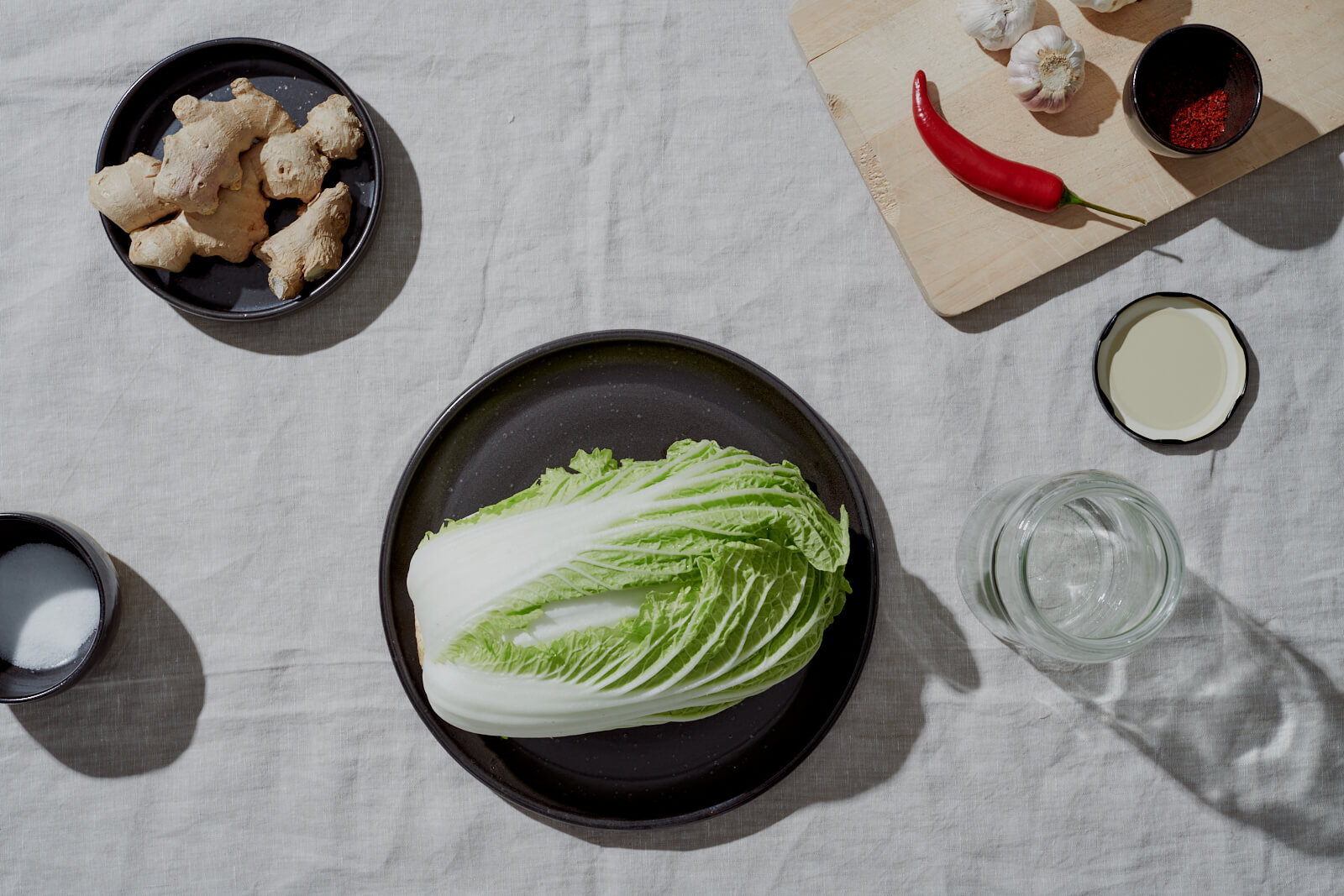
Kimchi – Korean fermented vegetables with a thousand years of history.This traditional dish is not only served as a side dish with fish, meat, tofu, and appetizers, but also as a base for dishes like Kimchi rice pans, Kimchi soup, Kimchi stew, and more. The fermented cabbage and garlic-ginger mixture is not only a flavorful winter/lockdown staple and a foundation for cooking, but it also boosts metabolism and digestion, and activates the body’s own defense system against viruses.
Many cultures incorporate natural fermentation into their culinary traditions. For instance, the German equivalent of Kimchi is Sauerkraut. Korean Kimchi has gained popularity as a world-famous dish from Korean cuisine in recent years. It is primarily composed of fermented vegetables, with Chinese napa cabbage making up the majority (around 70%). It can also include radish, spring onions, carrots, and a special seasoning paste made from salt, garlic, ginger, and Korean chili flakes.
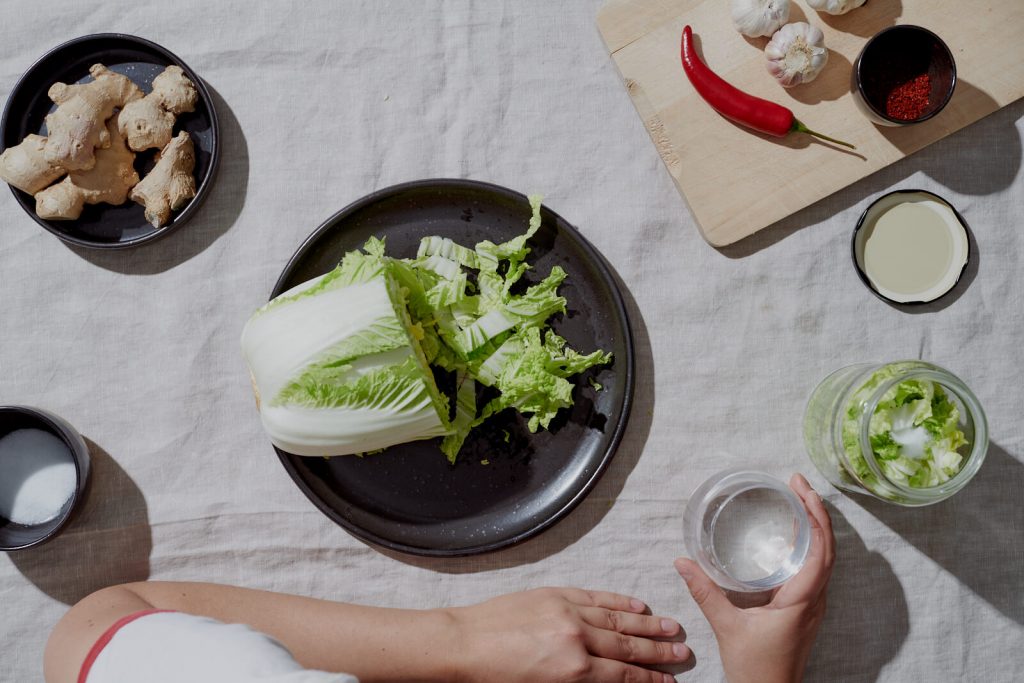

The dominant colours of Kimchi have evolved over time. Until the 17th century, Kimchi was primarily white. Red chili peppers were first introduced from Portugal via Japan, revolutionising Korean cuisine. Kimchi also varies in terms of recipes and flavours, influenced by factors such as region, ingredients, season, and duration of fermentation. Kimchi is now served at nearly every meal in Korea and was historically pickled in large quantities, especially from November to December, as a stockpile for the long and harsh Korean winters.
This traditional dish is not only served as a side dish with fish, meat, tofu, and appetisers, but also as a base for dishes like Kimchi rice pans, Kimchi soup, Kimchi stew, and more. The fermented cabbage and garlic-ginger mixture is not only a flavourful winter staple and a foundation for cooking, but it also boosts metabolism and digestion, and activates the body’s own defense system against viruses.
Ingredients for the best Kimchi Recipe
Ingredients
- For a medium sized preserving jar of Kimchi
- 1 x head of Chinese napa cabbage
- 2 tablespoons of sea salt to marinate the Chinese cabbage
- 5-10 x cloves of garlic
- 1-2 cm fresh ginger
- 2 tablespoons Gochugaru, Korean chili flakes
- 4 tablespoons Usukuchi (Light Soya Sauce)
- 2 ½ tablespoons of water
- Optional: 1 x carrot, 1/4 x radish, 1 x spring onion
- Non-Vegan Optional: 4 tablespoons vegan fish sauce, 4 tablespoons sugar
Step-by-Step Kimchi Recipe Guide
Read the short step-by-step guide below or the more detailed version at the end of this journal article:
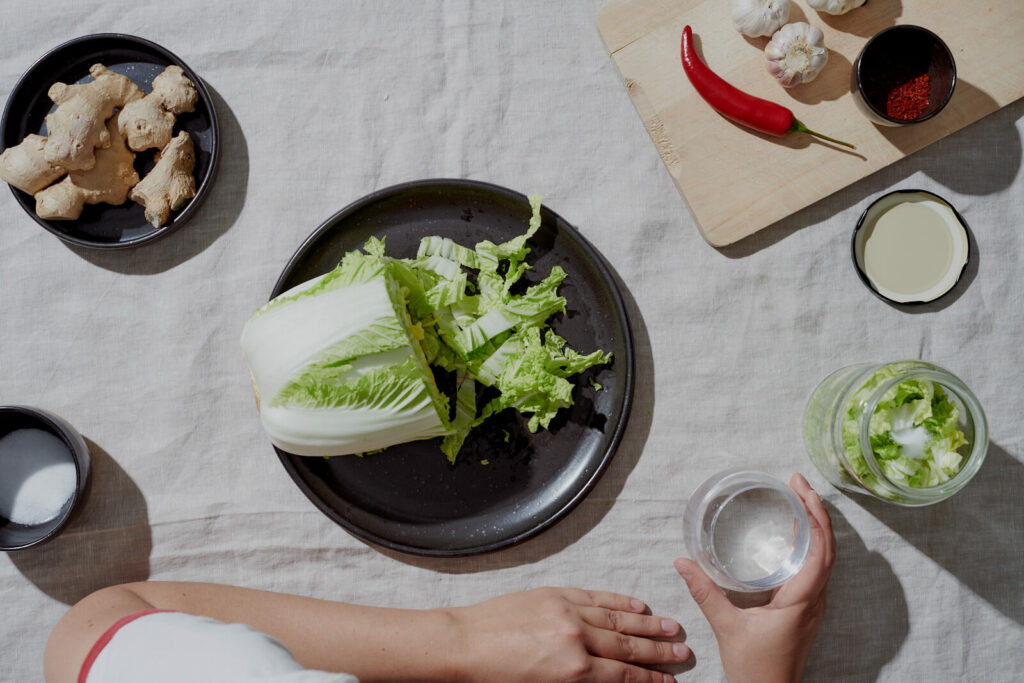
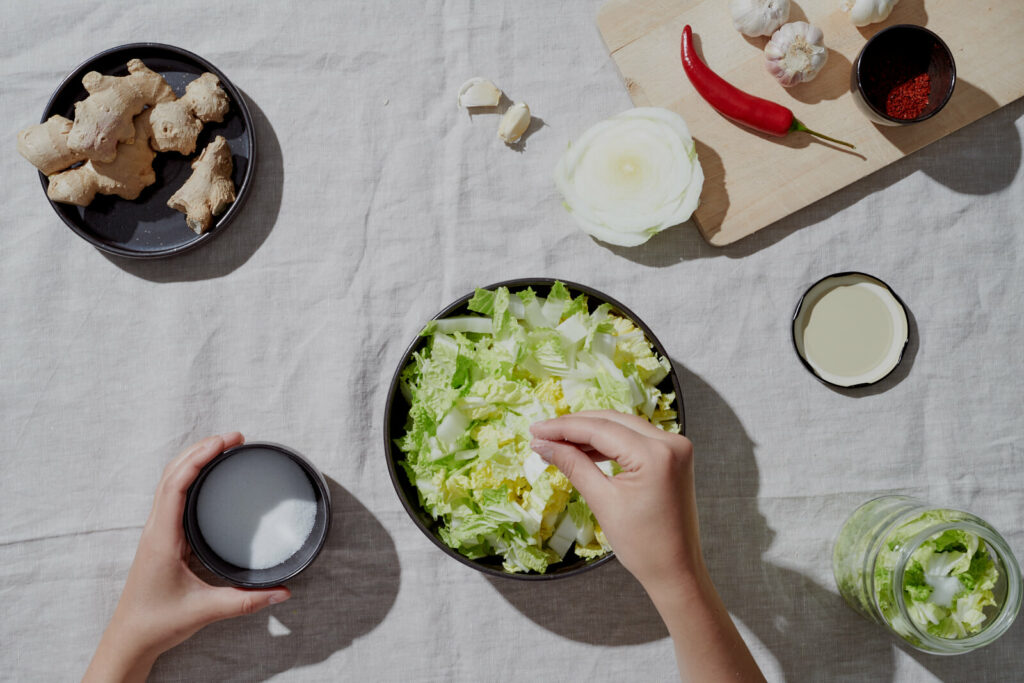
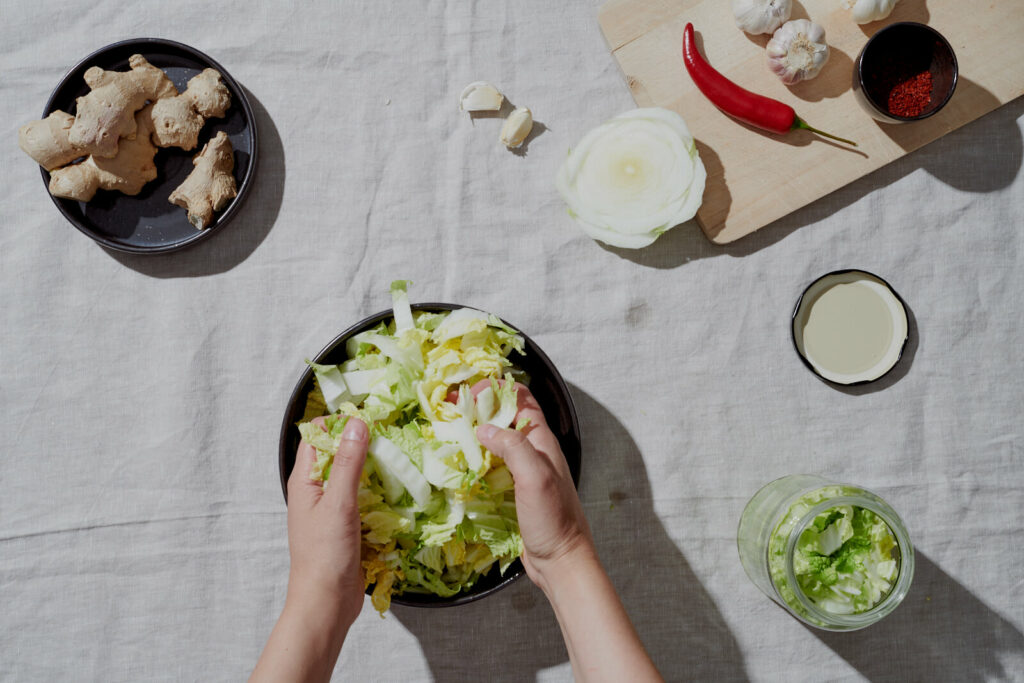
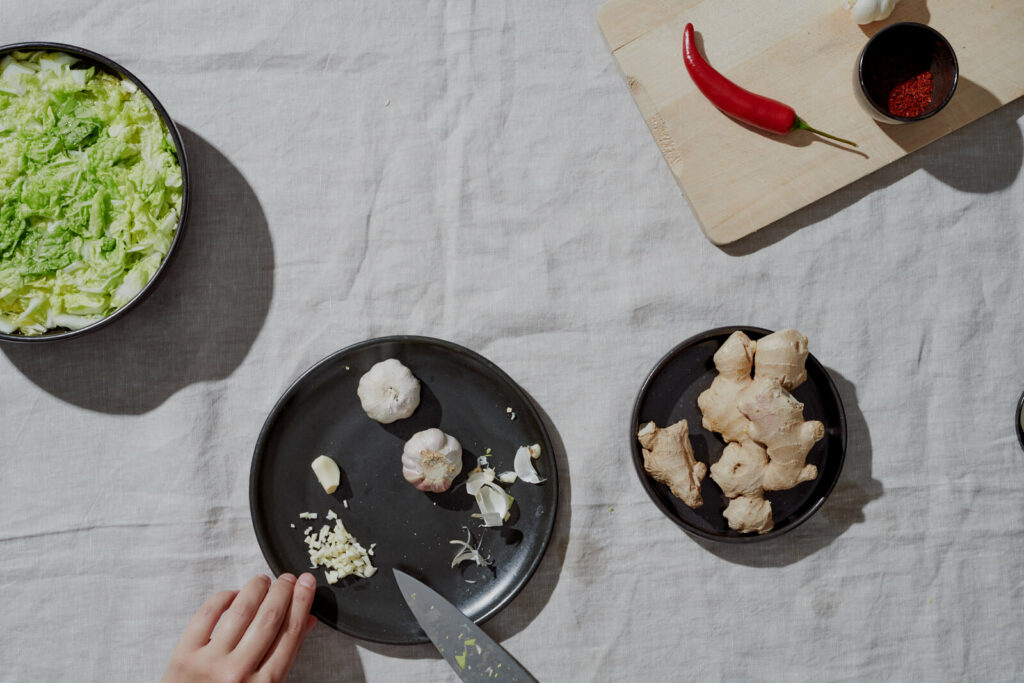
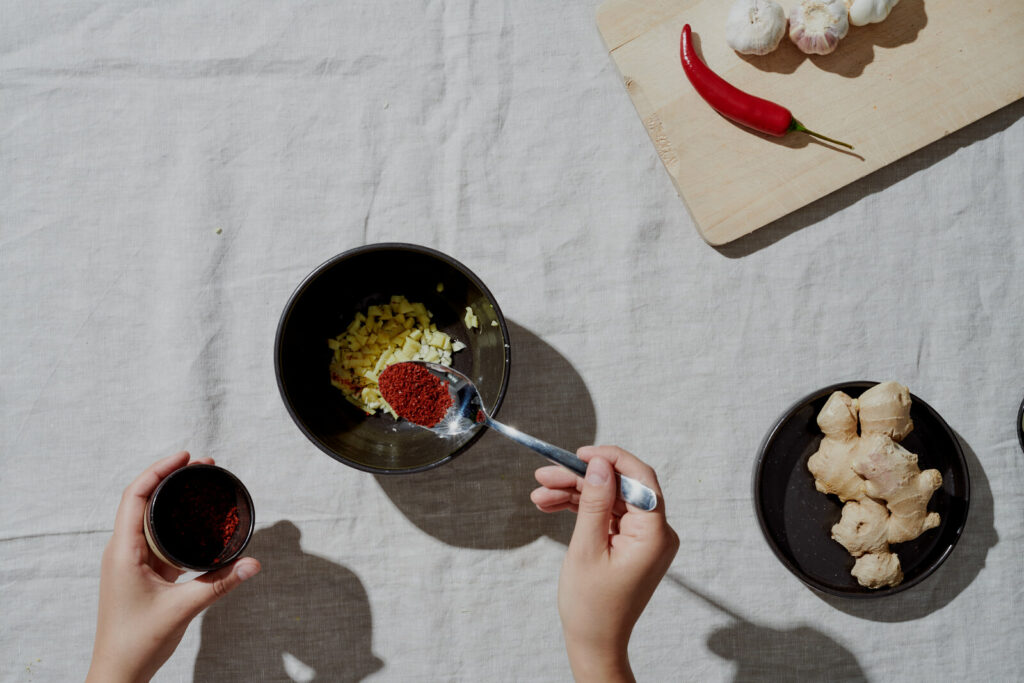
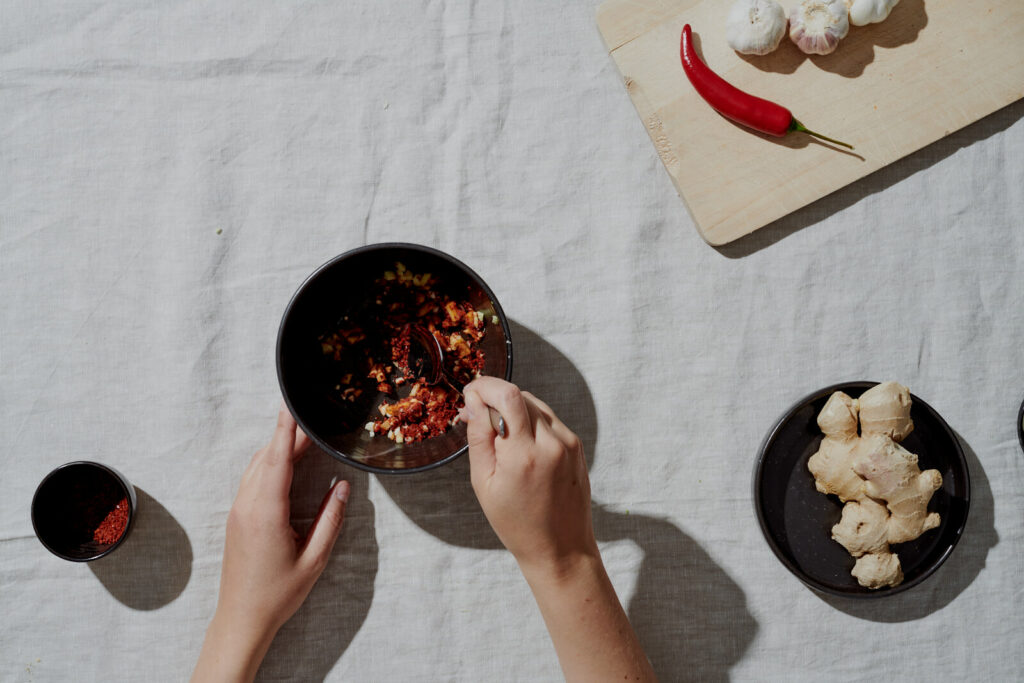
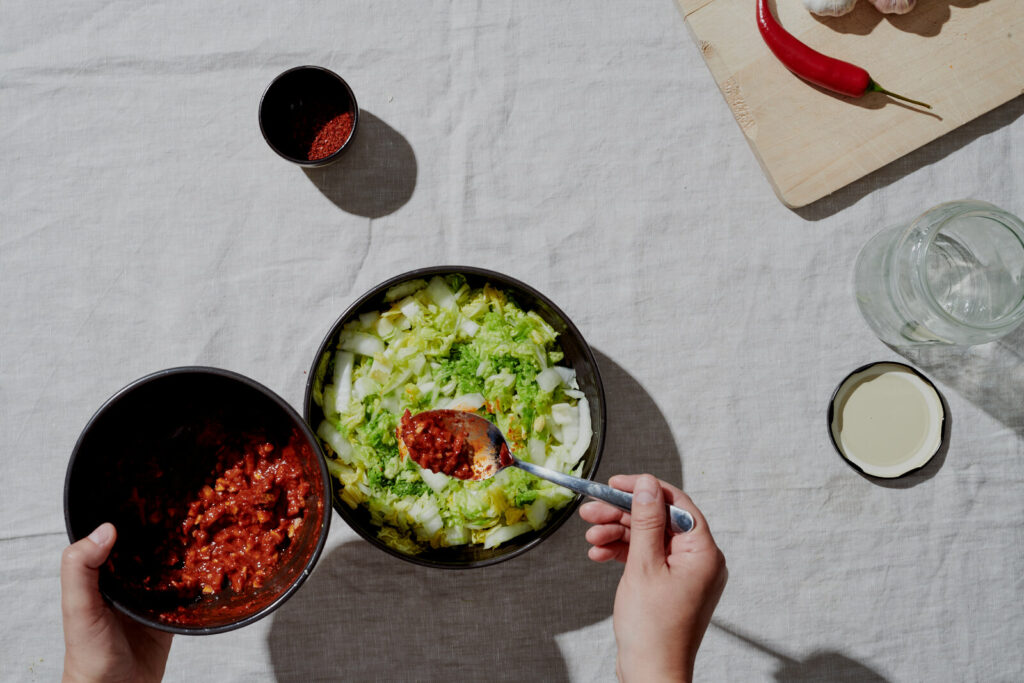
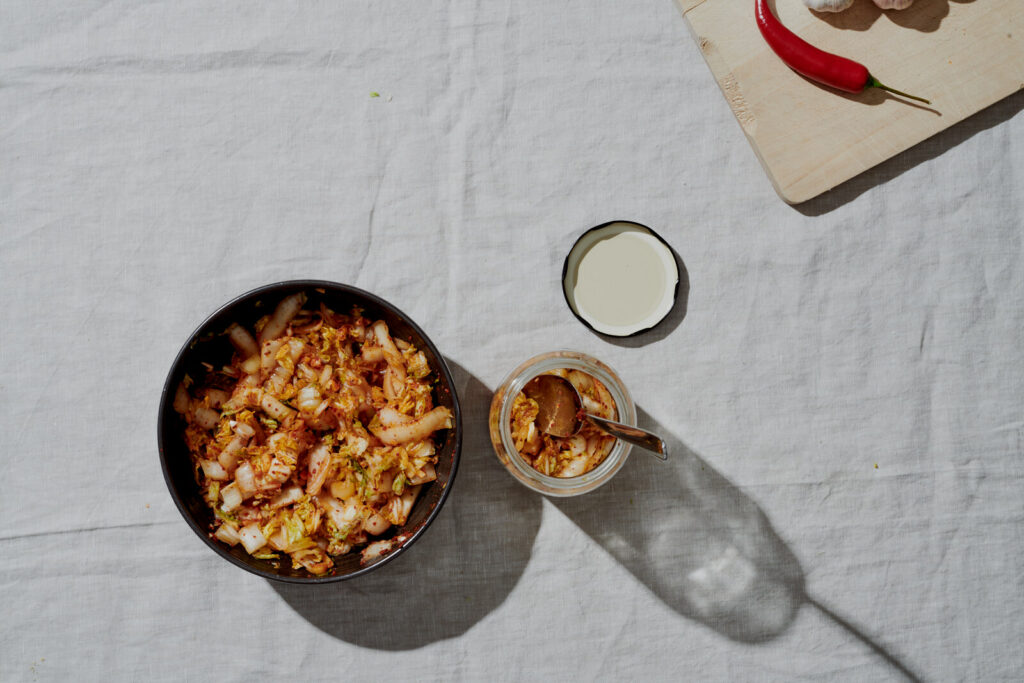
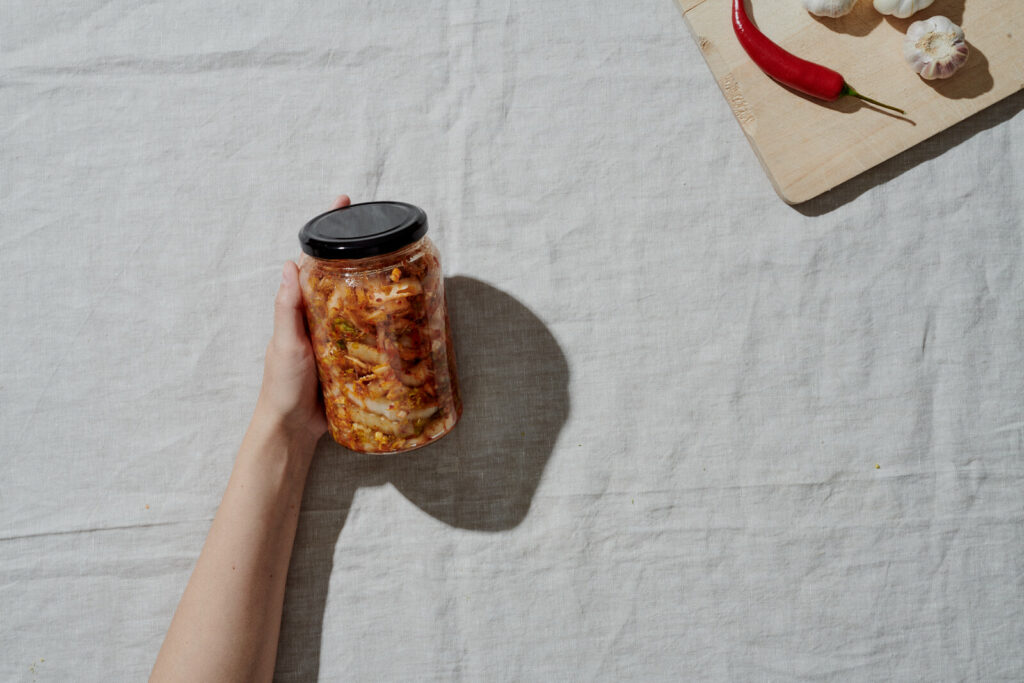
Kimchi: Simple, Fast, Healthy and Inexpensive DIY Recipe
Explore my family’s Kimchi recipe passed down by my mother-in-law, but feel free to get creative with your own ingredients. In my opinion, there’s no definitive ‘right’ or ‘wrong’ – it’s a journey of endless experimentation and refinement through trial and error.
All the stoneware ceramics used for the Kimchi preparation are hand-thrown by one of the last stoneware ceramic manufacturers in Germany and are designed by me for my Berlin based Label REH (GERMANY):
The black and white matt »Polar« tableware ceramic collection, designed in 2015, is timeless and unobtrusive, giving your food creations all the attention they deserve. For the Kimchi preparation I used the wide belly-shaped Wholy Bowl for preparing the cabbage, the high Burri Bowl for mixing the seasoning, the small 14 cm plate as well as the espresso / saki bowl for placing the ingredients. The same stoneware ceramic range is available in white speckled and grey and unglazed.

Vegan Kimchi ingredients and preparation
- Boil out a preserving jar.
- Wash the Chinese cabbage and cut it into large 1-2 cm wide pieces.
- Fill a bowl with lukewarm water and salt it with 2 tablespoons of sea salt. Add the Chinese cabbage to the brine and knead lightly with your hands. Then leave the cabbage in the brine for 1-3 hours or overnight.
- Once the cabbage leaves have softened, you can cut 1-2 cm of ginger and 5-10 cloves of garlic into fine pieces. Then mix with 2 tablespoons of Gochugaru (Korean chili flakes) and 4 tablespoons of Usukuchi (light soy sauce). Mix with 2-3 tablespoons of water to a consistency like salad dressing. Optional: 4 tablespoons vegan fish sauce, 4 tablespoons sugar.
- Cut a carrot into small pieces, the same quantity for the radish and a spring onion and mix with the spicy seasoning sauce.
- Remove the napa cabbage from the brine and rinse with a little water. Mix the spicy seasoning with the cabbage in a bowl and then pour into a preserving jar. The kimchi should always be covered with liquid.
- It is best to let it ferment for 1-3 days in a shady place at room temperature and then store it in the refrigerator.
- The kimchi tastes rather mild after 1-2 days and develops more acidity and its strong kimchi flavour over time.
- The kimchi can be eaten the day after, but tastes more intense after 7-14 days when the vegetables have fermented. The kimchi can be kept for 2-3 months.
- Inspired by the black dolsot (stone pot), in which bibimbap is usually served, I prepared and served the kimchi in black hand-thrown ceramics.
Hand-thrown Stoneware Ceramic Tableware by REH (GERMANY)
Photography by Kerstin Mueller
